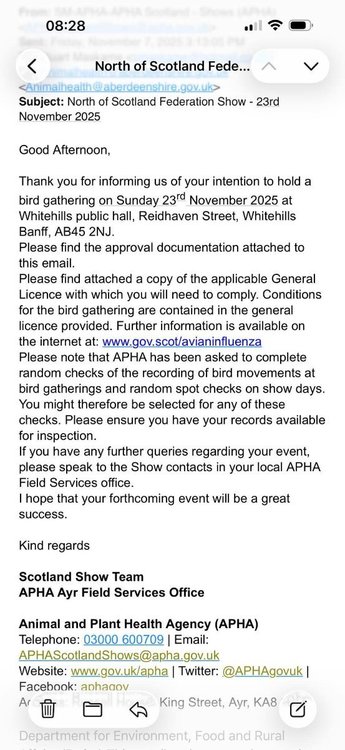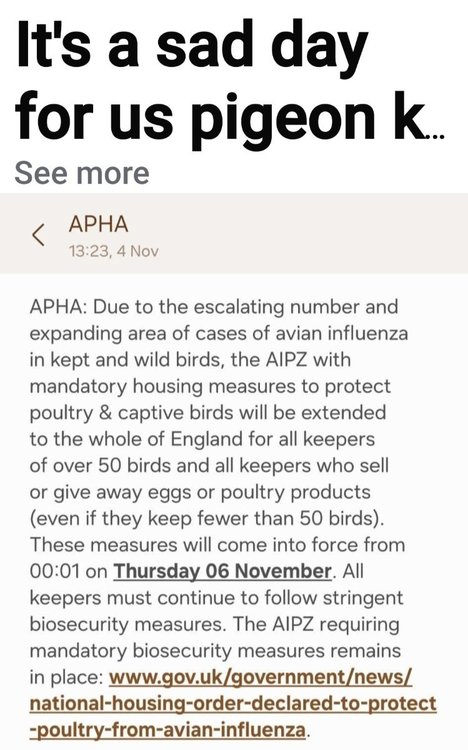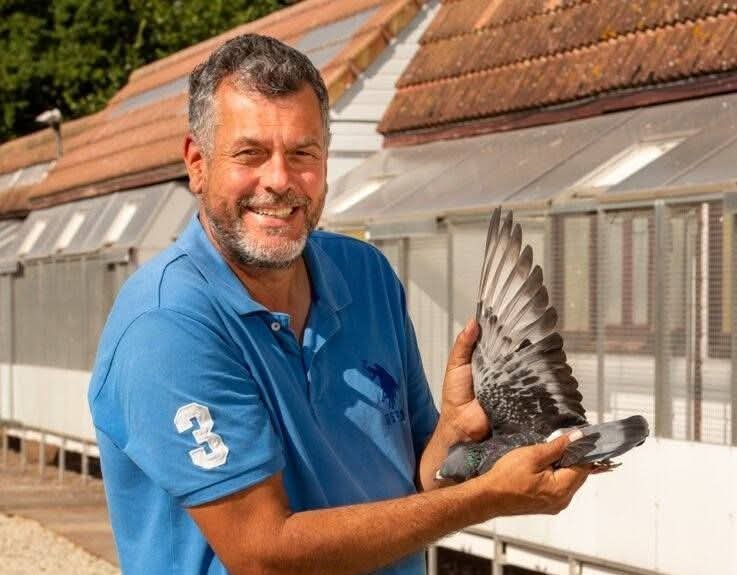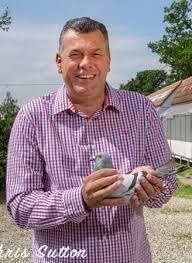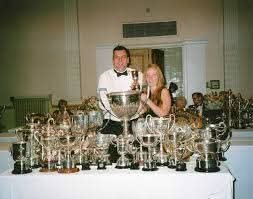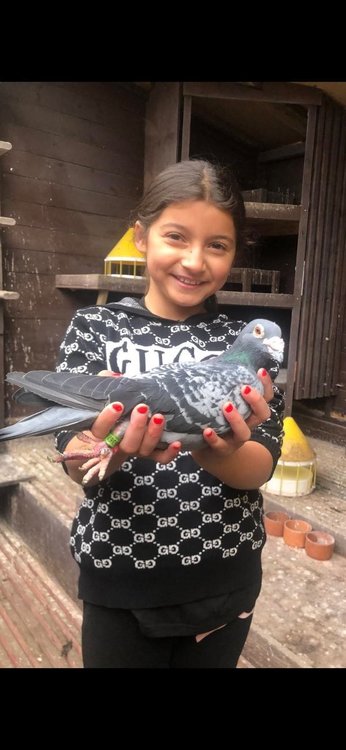Copied from Facebook 2nd November 2025
🎯 The Inspiring Story of Mark Gilbert 🎯
A RE-WRITE OF AN OLD ARTICLE
When a 15-year-old boy watched one of his pigeons fly home from a 560-mile race and finish 233rd in the National Flying Club (NFC) Pau National, two things happened: he burst into tears of joy and fell completely in love with long-distance pigeon racing. That boy was Mark Gilbert from Winkfield near Windsor in Berkshire.
Over the next three decades, that early passion never faded — it only grew stronger. While many have tried, very few have matched his record of success in the world of international pigeon racing.
🚀 A Breakthrough Moment
In 2003, the West Country fancier Brian Sheppard achieved what many thought impossible: 1st NFC and 1st International Dax against more than 19,000 pigeons.
The following year, Mark Gilbert equalled that incredible feat — 1st NFC and 1st International Dax, beating over 17,000 pigeons, with Brian Sheppard finishing second. That moment established Mark as one of the elite fanciers in the country.
🏠 The Loft Setup
Mark began with a modest 6 ft × 6 ft builder’s shed. Today, his “Southfield” loft complex is 140 ft long, facing south-east, plus a 33 ft brick stock loft.
Widowhood loft: 72 ft × 10 ft, eight sections, housing 86 widower cocks in six sections and hens in two.
Young-bird loft: 40 ft × 10 ft, four sections, holding around 160 young birds.
Roundabout loft: 27 ft long, two sections plus a central corn store for 32 racing hens.
All lofts feature grid flooring and automatic nest-boxes — keeping things clean and efficient. Mark’s father Geoff also helps daily, ensuring everything runs smoothly.
🕊️ How the Birds Are Trained
Mark’s system is simple but highly disciplined.
After the moult, birds are paired: stock birds in December, widower cocks in February. All racers — sprint, mid, and distance — are mated at the same time.
Training: Long-distance cocks get two 15-mile tosses before their first race (usually 80–100 miles). They then exercise twice daily for about an hour.
Young birds: Raised on the darkness system. They get two training tosses per week from 35–40 miles plus the same twice-daily exercise routine.
Mark describes his approach as “hard but fair” — the birds are tested, but never overworked.
🌾 Feeding, Health & Breeding
Feed: Both widowers and young birds get a Versele Laga Superstar Plus mix with about 10% barley. Before major races, peanuts and seeds are added.
Medication: Minimal. A brief canker treatment before mating and another before big races. Mark believes that good corn provides most of the vitamins birds need.
Breeding: Only proven performers are bred from. Two main bloodlines dominate his loft:
Deweerdt Family: Strong, muscular birds with excellent feather quality.
Van Elsaker Family: Blues that excel at sprint and middle distance — including “Southfield Supreme,” the 1st International Dax winner.
He has also introduced bloodlines from German international winner Hans Peter Brockamp to enhance stamina and performance.
💡 Why It Works
Mark’s philosophy is simple: he’d rather have a bird that wins than one that just looks pretty. Many of his top performers weren’t “show birds” — they were tough, determined athletes bred from proven winners.
Everything about his setup focuses on what truly matters:
Smart loft design
Consistent training
Simple feeding
Proven genetics
Ruthless selection based on performance
❤️ More Than Just Racing
Beyond his results, Mark is admired for his generosity — often donating pigeons to charity sales and local clubs. He’s also known as a level-headed voice in the sport, respected for his work on the National Flying Club committee.
🏆 Final Word
From a small shed to one of the most successful lofts in the world, Mark Gilbert’s journey proves what passion, dedication, and smart systems can achieve. His success isn’t luck — it’s built on years of consistency, clear thinking, and love for the birds.
Here’s to the next chapter in the Southfield story — and to the inspiration Mark Gilbert continues to give to fanciers everywhere.









